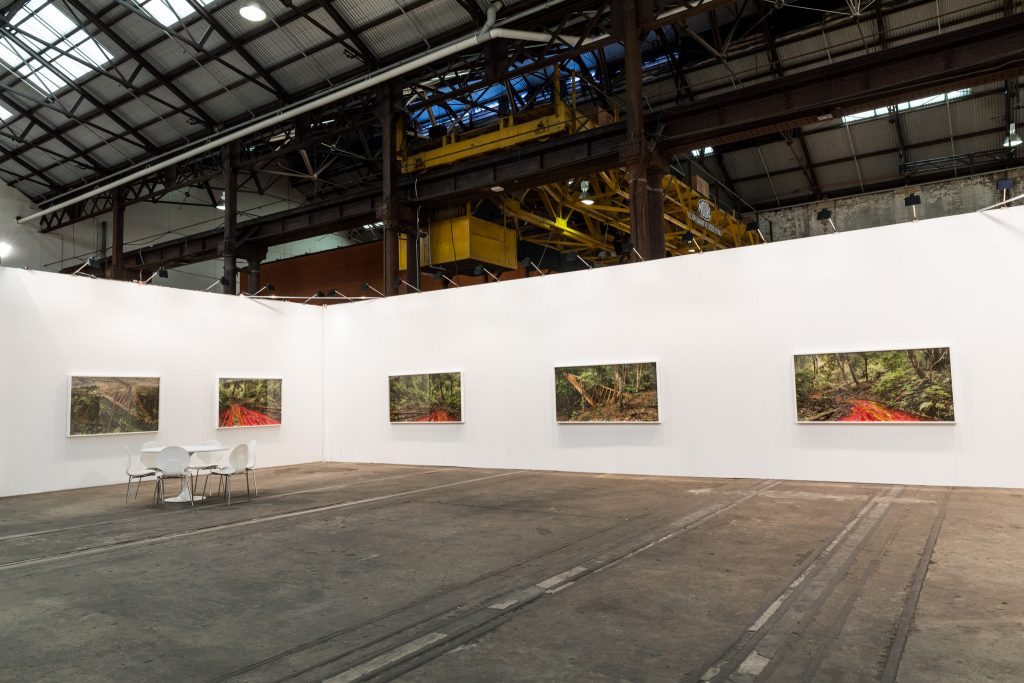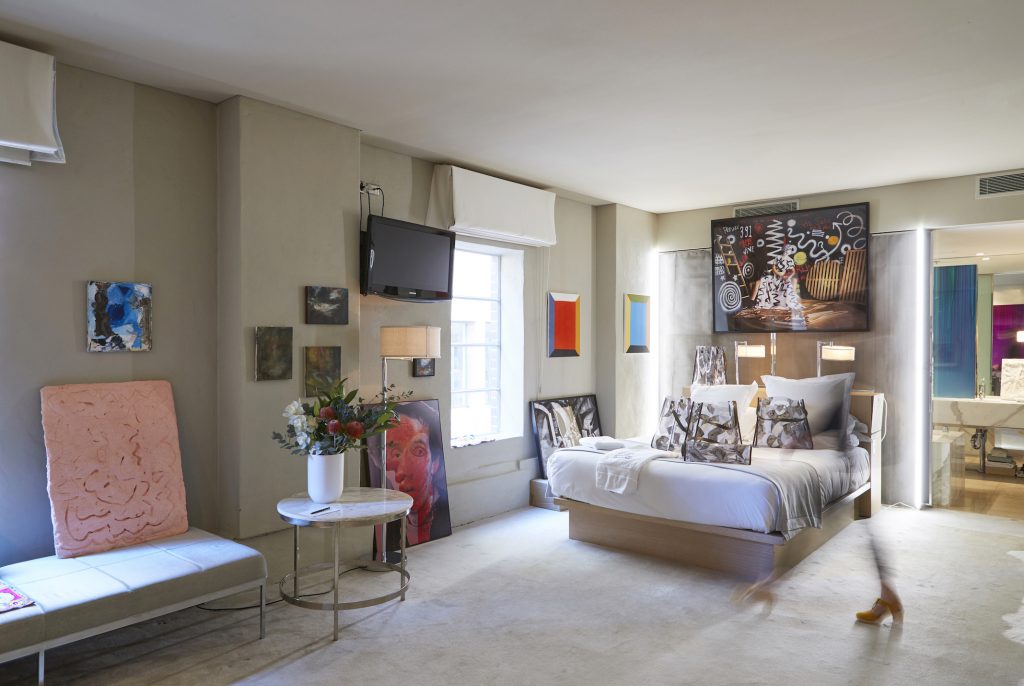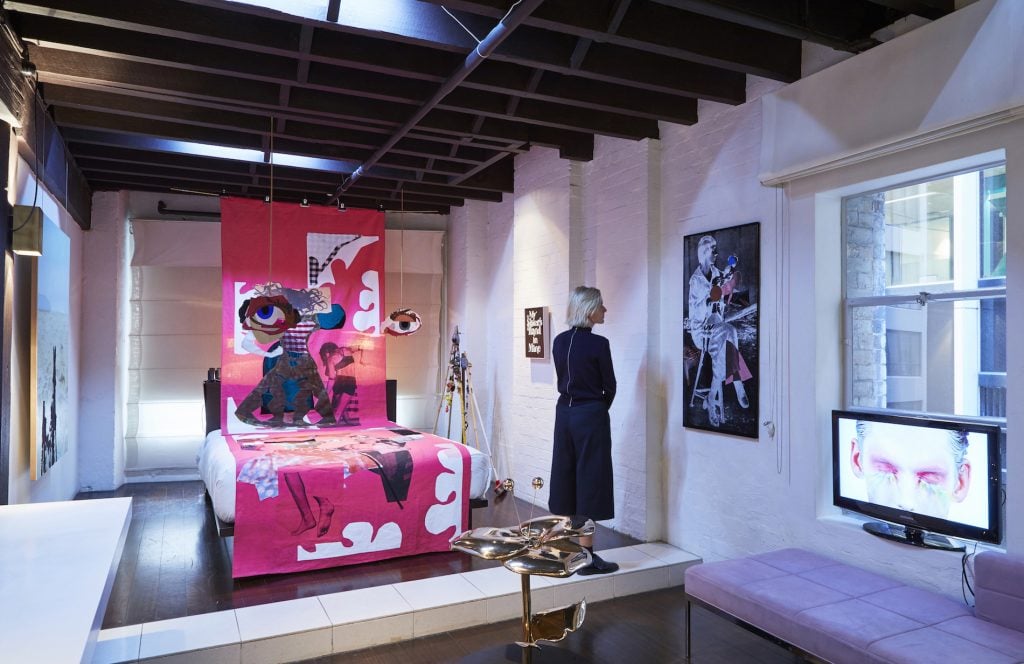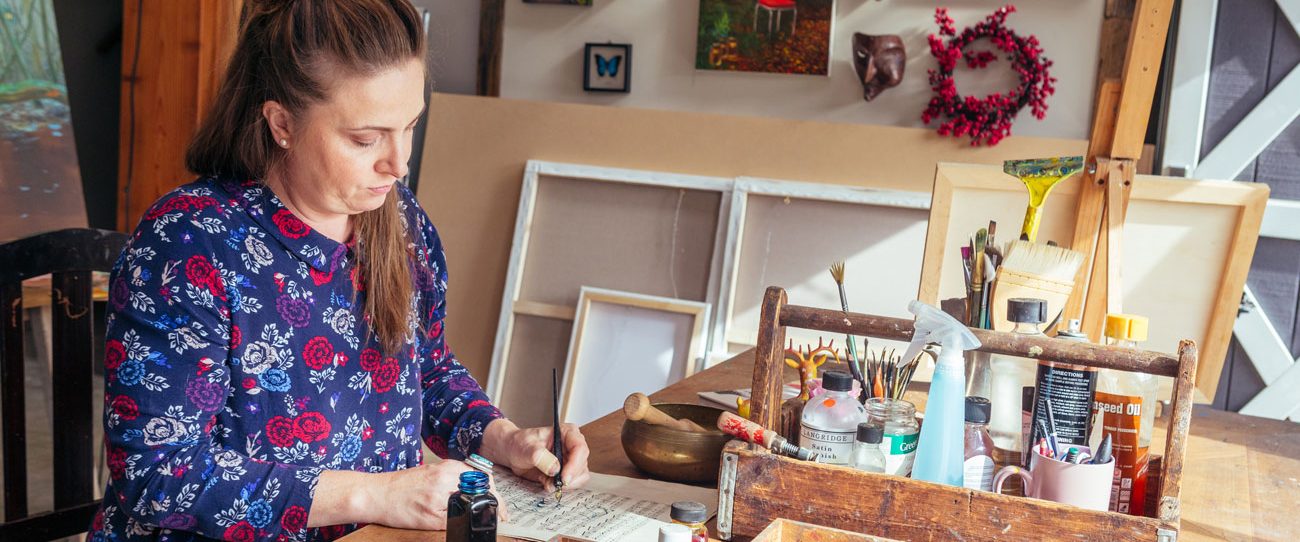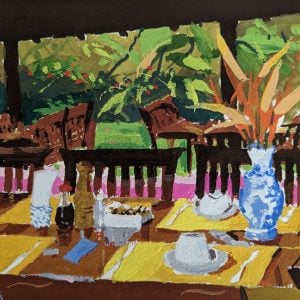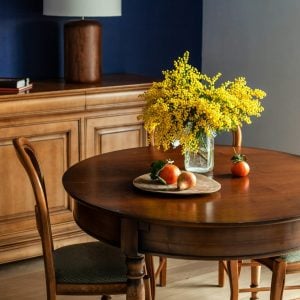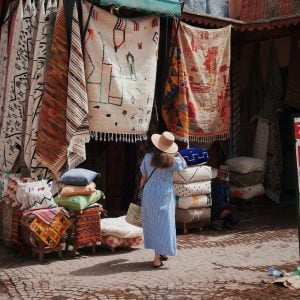Sydney Contemporary & Spring 1883
Early September saw the opening of Sydney Contemporary and Spring 1883, two young art fairs that have grown to become key events in the Australian art calendar for artists, galleries, and collectors. Though similar in age, the fairs differ wildly in their approach, making for an intriguingly diverse viewing experience.
First held in 2013, Sydney Contemporary is now Australia’s largest contemporary art fair, with over 98 galleries participating in the 2017 edition and an extensive public program running over the four days of the fair. With the majority of exhibiting galleries and art dealers based in Australia, this year’s iteration also featured strong representation from New Zealand, as well as galleries hailing from Japan, Iran, Germany, Chile, Singapore, the Philippines and the US.
Occupying the entire, vast Carriageworks complex, there was a lot to take in at this year’s Sydney Contemporary, with new galleries, new artists, and new work to discover among some familiar favourites. While larger galleries used their substantial floor space to showcase large works by known names – such as Rosemary Laing, whose stunning photographs of a forest floor carpeted with woven red and orange rags were given plenty of breathing space at Melbourne’s Tolarno Gallery – some real gems were also present among the smaller stalls and the cracks in between.
Playing with painting at Sydney’s Gallery 9 for instance, the trope of the frame was engaged by Julian Hooper and Jake Walker in two separate series of works exploring the painting as both picture plane and object. With his flat monotone paintings, marked only with the artist’s initials and the date of creation scratched into their surface, Walker takes painting back to its essential elements, highlighting the ‘thingness’ of the painted canvas. Pushing this concept further and somewhat softening the blow of his painting’s austerity, Walker has crafted ceramic frames glazed to match the canvas, further blurring the line between painting and sculpture and positioning each artwork as object rather than image. Hooper, on the other hand, plays up the illusion of surface that painting can achieve so well. At first glance, his formal abstractions appear to be painted on scraps of canvas, wrapped and pasted onto bare wooden frames. Looking closer however, one can see that what appears to be a backing frame is in fact canvas painted to look like wood, part of the continuous picture plane of the painting.
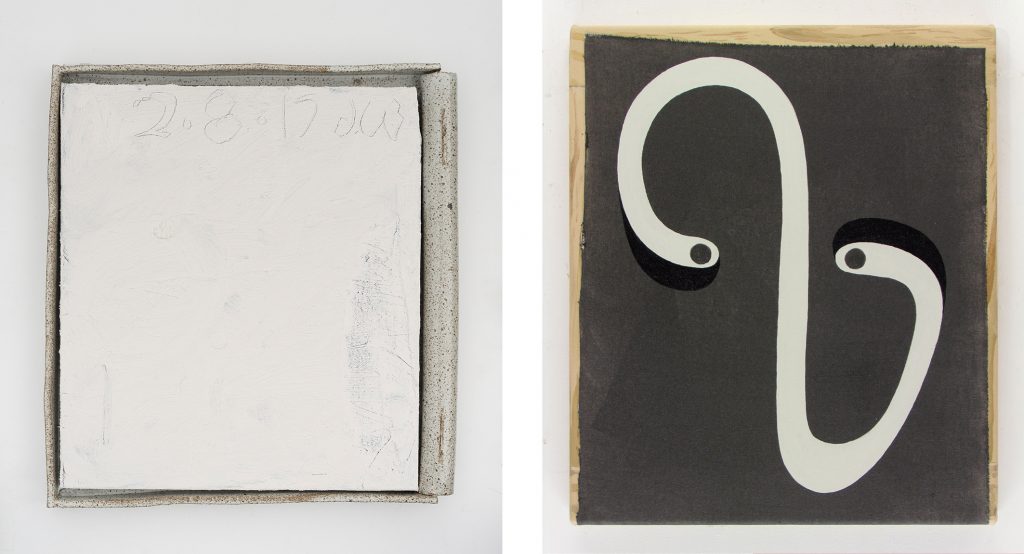
Jake Walker, #0047, and Julian Hooper, Decider, at Gallery 9, Sydney Contemporary, 2017. Photos courtesy of Gallery 9.
Punctuating the painted surface in the Future Contemporary section for younger and more experimental galleries, Sydney’s 4A Centre for Contemporary Asian Art hosted Indonesian artist Uji Handoko Eko Saputro, aka Hahan’s project Speculative Entertainment No. 1 (Sydney Edition). Referencing Indonesian and pop culture, Hahan’s colourful 7.5 x 2.6 m painting was divided into 1,619 square lots, with each lot sold for twice the entrance fee – allowing any visitor to the art fair to become a collector. Those who purchased a lot were encouraged to resell it at their own speculative price, and to pass on 10% of the resale price to Hahan as a commission.
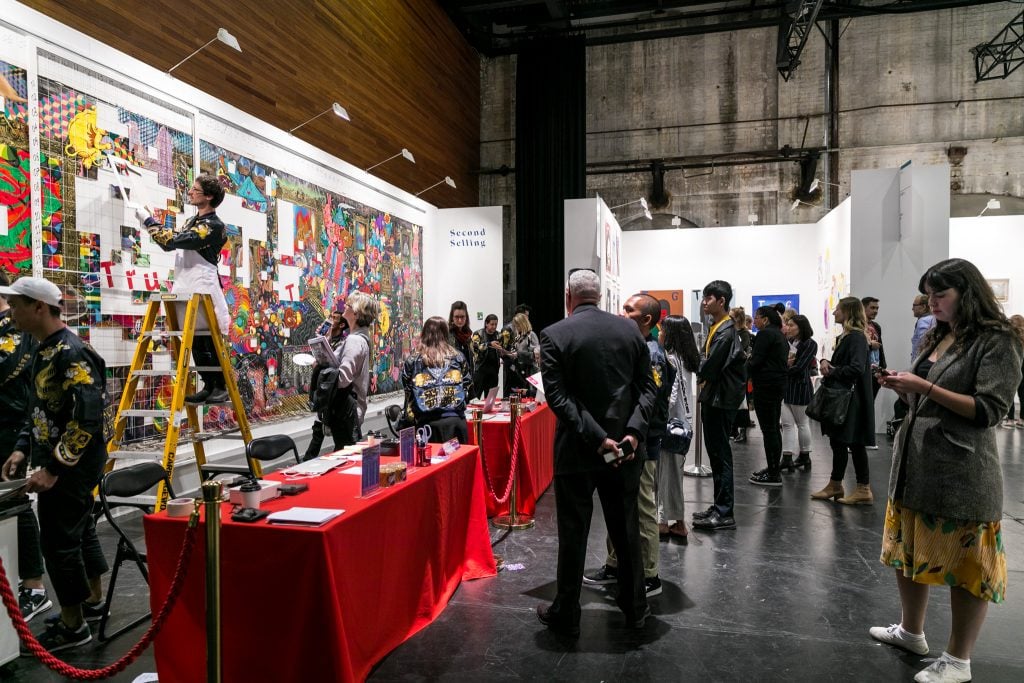
Uji Handoko Eko Saputro aka Hahan, Speculative Entertainment No. 1 (Sydney Edition), at 4A Centre for Contemporary Asian Art, Sydney Contemporary, 2017. Photo: Jacquie Manning.
Other experimental and ephemeral work appeared scattered throughout the venue as part of the fair’s curated programs. On the day we visited, artist duo The Huxleys roamed throughout the fair as part of Performance Contemporary, dressed to the nines and beyond in red and black sequinned boots and tights and inflating and deflating outfits, like surreal dandy rock stars promenading their milieu.
One of the most eye-catching works of Installation Contemporary, Richard Lewer’s installation on an exterior wall of the former Anna Schwartz Gallery (notably absent from fair participants) drew on his experiences attending Catholic church as a child. In his work Confessions, his adult sins announced themselves in black and white paint on perforated pegboard spreading across the wall and stacking up upon one another. Sometime I think my friends are useless. I have had filthy dreams. I really hate Christmas. It’s true I have not made dinner for a very long time…
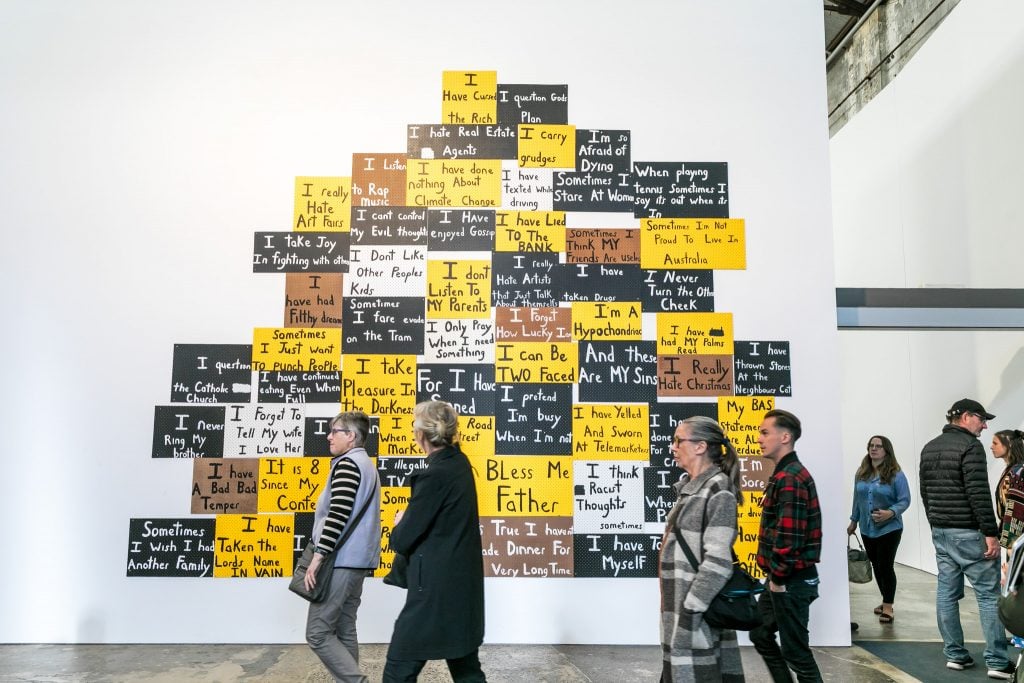
Richard Lewer, Confessions, for Installation Contemporary, Sydney Contemporary, 2017. Photo: Jacquie Manning
Galleries showing moving image work were in short supply at this year’s fair, a fact which may only become apparent when one sits down in a cinema dedicated to the excellent Video Contemporary program, curated by the Australian Centre for Moving Image (ACMI). With a line-up of works by artists including Hossein Ghaemi, Destiny Deacon & Virginia Fraser, Deborah Kelly & Christian J Heinrich, Elvis Richardson, and Angela Tiatia, one could easily spend a few hours absorbing this single slice of the fair.
After the overwhelming size and scale of Sydney Contemporary, the intimacy of Spring 1883 came as sweet relief. Conceived as an alternative to the traditional art fair model by the directors of galleries Neon Parc and Sarah Scout Presents, along with former gallerist Vasili Kaliman, Spring 1883 was launched in Melbourne at the Windsor Hotel in 2014, with participating galleries presenting artist’s work in the hotel’s suites. This model, borrowed from New York’s Gramercy Park Art Fair, has continued since with the fair alternating each year between its Melbourne site and The Establishment Hotel in Sydney.
One of the benefits of boutique art fairs such as Spring 1883 is their smaller scale, which relieves the pressure one tends to feel at very large exhibits to see absolutely everything (without properly absorbing anything). With just 25 galleries handpicked by the organisers in this year’s iteration in Sydney, there was plenty of time to look at the artwork and to chat with the gallerists in their suites.
While there was a strong selection of works more or less across the board at Spring 1883, the best installations were those that embraced the hotel environment. Within this context, Darren Sylvester’s text embroidered towels, complete with red spellcheck squiggles at Neon Parc made the perfect image for an audience active on social media. “ever have that feeling that all the worldreally wants from you is to keep punching out self-generating Google Ads?” asked one. “(when) I get drunk I love everything on instagram” stated another. Sharing the same space, Georgina Cue’s large photographs of surreal tableaus hit just the right art historical notes while still feeling fully contemporary.
Moving from suite to suite, it was fun to see how each gallery dealt with the hotel beds. At Sarah Scout Presents, a banner by Sally Smart became a bed spread, while at Sutton Gallery, the felt shapes of Peter Robinson’s Blue Slump were satisfyingly piled up on the perfectly made bed, with an empty speech bubble suspended above. But it was Jason Phu (also the commissioned artist for Sydney Contemporary’s Project Space) and his installation where does loves come from? it comes from the guts. your heart explodes and your tongue is ripped out at Alaska Projects that took the prize for ‘Best Use of Bed’ (and work title). Two plastic skeletons, wearing a pink rabbit mask and orange monkey mask respectively, lay hand in hand in bed, tucked under a black tarp roughly painted with Chinese characters. Plastic bananas protruded from the monkey mask’s eyes, while ‘his’ ribcage was stuffed with toy dynamite. His companion lay next to him with toy bullets strapped across ‘her’ chest. They looked very happy.
Different strokes for different folks.
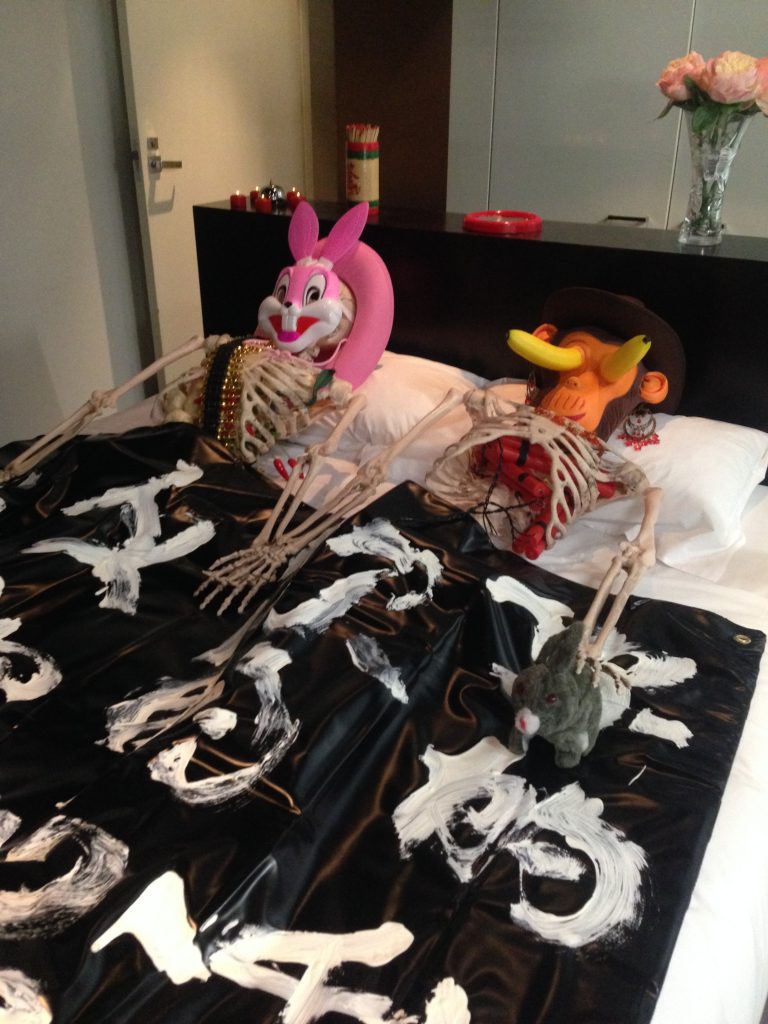
Jason Phu, where does loves come from? it comes from the guts. your heart explodes and your tongue is ripped out, at Alaska Projects, Spring 1883, 2017. Photo: Laura McLean


